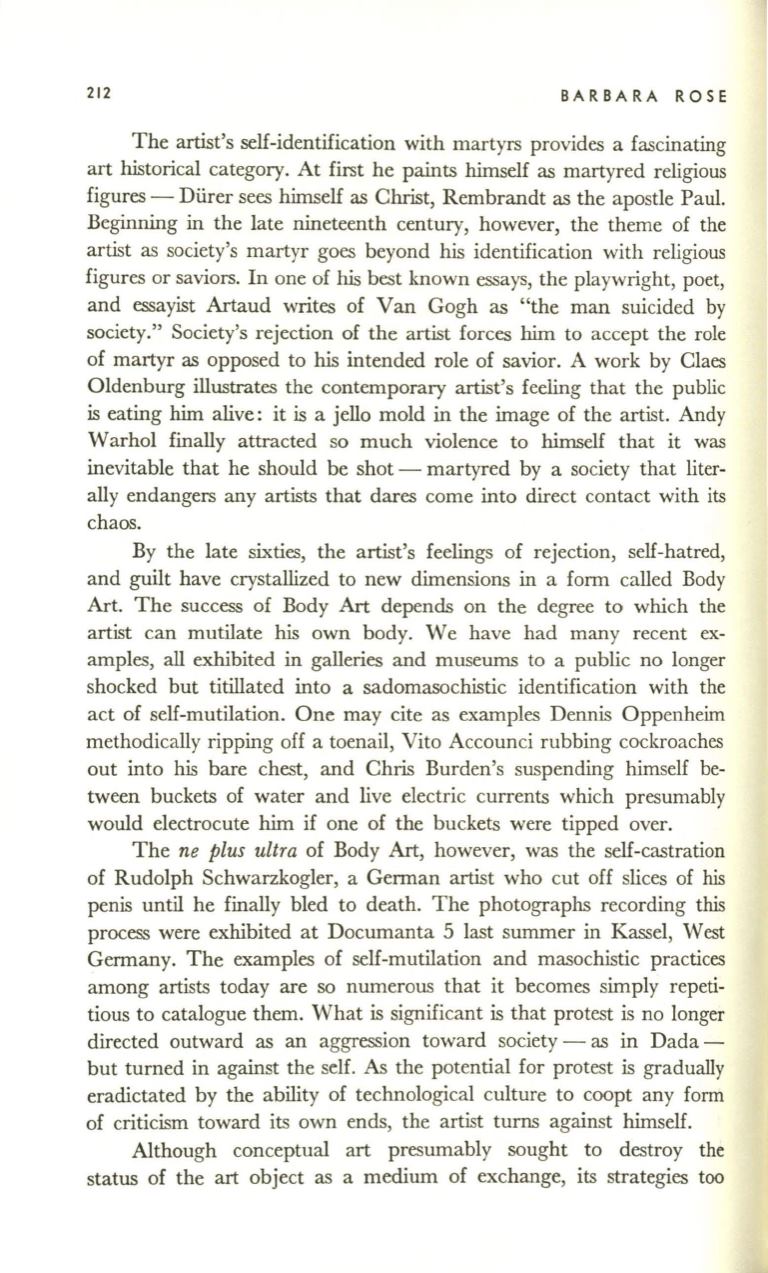
212
BARBARA ROSE
The artist's self-identification with martyrs provides a fascinating
art historical category. At first he paints himself as martyred religious
figures - Durer sees himself as Christ, Rembrandt as the apostle Paul.
Beginning in the late nineteenth century, however, the theme of the
artist as society's martyr goes beyond his identification with religious
figures or saviors. In one of his best known essays, the playwright, poet,
and essayist Artaud writes of Van Gogh as "the man suicided by
society." Society's rejection of the artist forces him to accept the role
of martyr as opposed to his intended role of savior. A work by Claes
Oldenburg illustrates the contemporary artist's feeling that the public
is eating him alive: it is a jello mold in the image of the artist. Andy
Warhol finally attracted so much violence to himself that it was
inevitable that he should be shot - martyred by a society that liter–
ally endangers any artists that dares come into direct contact with its
chaos.
By the late sixties, the artist's feelings of rejection, self-hatred,
and guilt have crystallized to new dimensions in a form called Body
Art. The success of Body Art depends on the degree to which the
artist can mutilate his own body. We have had many recent ex–
amples, all exhibited in galleries and museums to a public no longer
shocked but titillated into a sadomasochistic identification with the
act of self-mutilation. One may cite as examples Dennis Oppenheim
methodically ripping off a toenail, Vito Accounci rubbing cockroaches
out into his bare chest, and Chris Burden's suspending himself be–
tween buckets of water and live electric currents which presumably
would electrocute him if one of the buckets were tipped over.
The
ne plus ultra
of Body Art, however, was the self-castration
of Rudolph Schwarzkogler, a German artist who cut off slices of his
penis until he finally bled to death. The photographs recording this
process were exhibited at Documanta 5 last summer in Kassel, West
Germany. The examples of self-mutilation and masochistic practices
among artists today are so numerous that it becomes simply repeti–
tious to catalogue them. What is significant is that protest is no longer
directed outward as an aggression toward society - as in Dada–
but turned in against the self. As the potential for protest is gradually
eradictated by the ability of technological culture to coopt any form
of criticism toward its own ends, the artist turns against himself.
Although conceptual art presumably sought to destroy the
status of the
art
object as a medium of exchange, its strategies too


